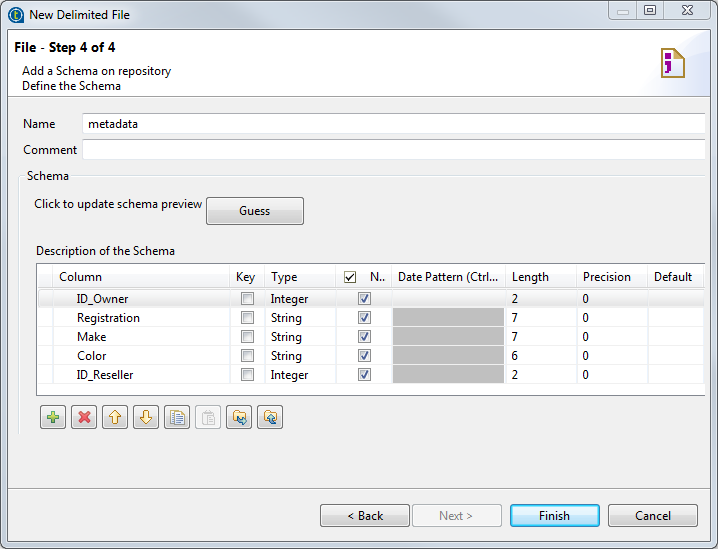Checking and customizing the file schema
About this task
The last step shows the Delimited File schema generated. You can customize the schema using the toolbar underneath the table.

Procedure
Did this page help you?
If you find any issues with this page or its content – a typo, a missing step, or a technical error – let us know how we can improve!
